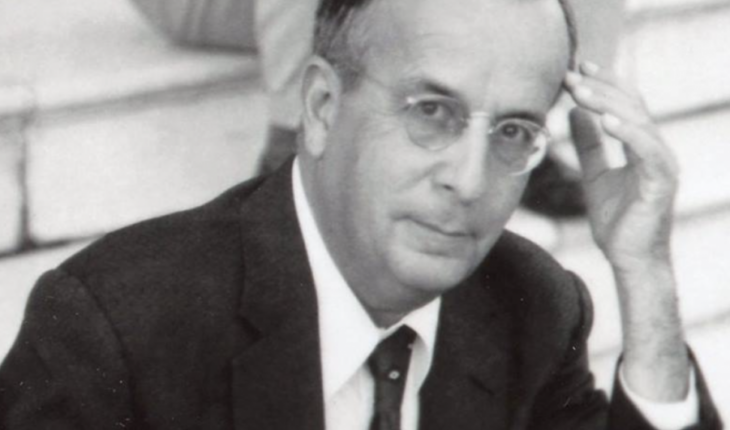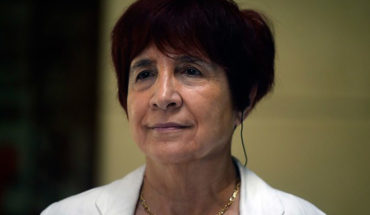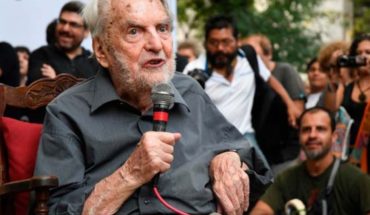His legacy in force almost half a century after his death accounts for this. Born on January 11, 1892, he began his career as a Civil Engineer at the Massachusetts Institute of Technology (MIT) in 1910, just the same year as the outbreak of the Mexican Revolution. He finished his university studies four years later and it was in 1917 when he entered to work at the Cuauhtémoc Brewery as an assistant of the Department of Statistics. His first salary was 125 pesos a month.
Joining this company, founded by several people, including his father Isaac Garza Garza, meant the first step to become one of the most relevant entrepreneurs of his time. However, before he took the reins of the company, together with his brother Roberto, he held several positions as an assistant in the Sales Department and deputy manager.
From his beginnings as a brewery worker, his austere and discreet personality was noticeable. Reluctant to speak in public or to go out in photos but efficient to grow the company because, thanks to his vision, the holding company Valores Industriales, SA (VISA), which began to take shape in the mid-30s with a dozen companies including brewing companies, factories that processed malt and made aluminum cans, producers of cardboard, corks, glass, as well as companies providing technical and distribution services. Together with his brother, he gave life to a giant.
It is a giant that we now know as FEMSA and that at the beginning of the 70s was formed by 90 companies, which employed more than 33 thousand people (today they have more than 320 thousand employees). A giant guarded by Don Eugenio who, at that time, worked about 45 hours a week, from Monday to Friday.
Corporate responsibility
Along with the growth of his business legacy, Eugenio Garza Sada stood out for his vocation of service to the community: education, art and corporate social responsibility were always part of his actions.
Within the company, he was promoter of the housing program created in 1922 by Luis G. Sada; An example of this is the Cuauhtémoc neighborhood of Monterrey, built between 1924 and 1928 on a plot of 130 thousand square meters, of which 18% would be used for parks and public spaces. The beneficiaries of this program were workers of the brewery, who paid monthly for their homes a price subsidized by the company.
Already at the head of the company, Don Eugenio created the program “Everyone with their own room”. Such was the magnitude of this project that between 1951 and 1971 a house was given to its collaborators every 48 hours and 79% of the company’s staff came to have a house of their own. It was a revolutionary program and, to get an idea of how innovative it was, suffice it to say that the National Housing Fund for Workers (Infonavit) was created in 1972.
Both housing and the health of his collaborators were a priority for the businessman from Regiomontano. Even before 1943, when the IMSS was created nationwide, those who worked in the brewery and the companies of the holding company they had among their benefits a private health care service, and life and health insurance.
Promoter of education and art
1921 marked the year in which Eugenio Garza Sada began to form his family. That year he married Consuelo Lagüera, who was the daughter of the Spanish consul in Monterrey. The couple’s children were: Eugenio, Alejandro, Alicia, Consuelo, Gabriel, Marcelo, David and Manuel. But the businessman had one more son, who was born in 1943: the Tecnológico de Monterrey, an institution he called “his ninth child”.
Conceiving this ninth child was no easy task. The idea, which was planted since Don Eugenio’s college years at MIT, began to take shape since he joined the brewery. The goal was to promote an educational institution focused primarily on industry.
After facing political resistance and the search for partners, on September 6, 1943 the Tec de Monterrey opened its doors with only 350 students and about 27 teachers – 17 of them from the plant, an innovation in the country for the time. For this, classrooms were set up in a house on Abasolo Street, in the center of Monterrey, where accounting and engineering careers were offered.
One of the central purposes of the institution was to contribute to the transformation of the country. Therefore, the quality of education was one of its fundamental axes. Today, the Tec de Monterrey has 26 campuses throughout the national territory, where almost 95 thousand students and 11 thousand teachers attend, but beyond the numbers, it is the most important private educational institution in the country.
In addition to academic activities, one of the main contributions of Tec de Monterrey has been to promote art, another of Don Eugenio’s passions. The Technological Artistic Society has organized concerts, theatrical and ballet performances, as well as exhibitions for the general public for decades. Those close to Don Eugenio remember that the businessman always tried to attend these events.
The person
Little affection for going on vacation, Don Eugenio’s schedules were strict: at 8:00 in the morning he was already having breakfast and at 8:30 he left for his office; he returned to eat at 1:30 and at 2:45 he went back to the brewery. Around 6:00 p.m. I was returning.
He liked to listen to music and read, one of his hobbies was scientific journals. He also became passionate about gardening, which he practiced in his country house.
His room, even though he was already one of the first Mexican businessmen to appear on the list of Forbes, it was always the same: a small room where a small bed fit, two bureaus, a place to store his clothes, an equally small closet where there were only three suits and a hat.
Family members and close associates say he was a person who knew how to divide work from personal life. When he got home, he left at the door the responsibility of running one of the largest companies in the country, or of bringing to fruition one of the most prestigious educational institutions in Mexico.
His death, on September 17, 1973, generated a commotion both in the business sector and in society in general, largely because of his legacy that was already present in the country.
Their funerals were attended by about 50,000 people and in their companies, where about 160,000 people already worked, the work was suspended as a sign of mourning.





